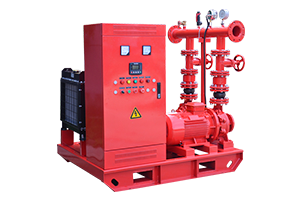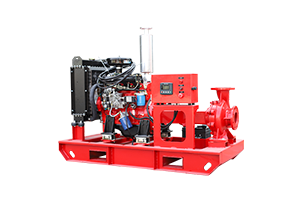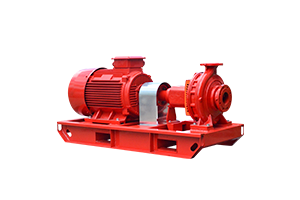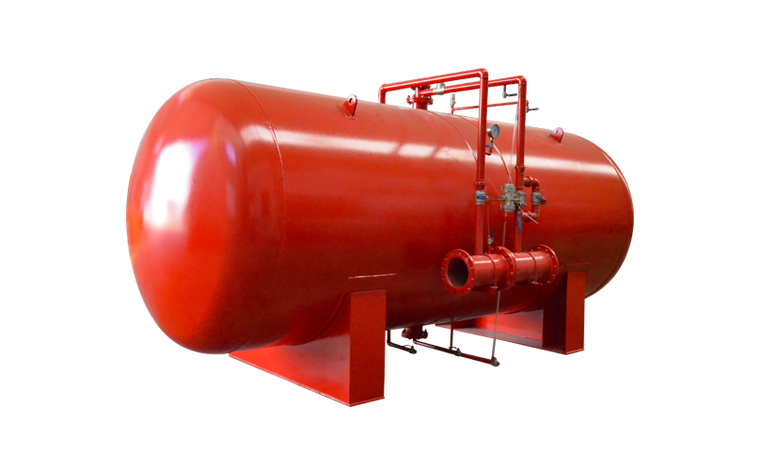-
 Feb 02, 2023Causes and treatment methods of water pump leakageCauses and treatment methods of water pump leakage
Feb 02, 2023Causes and treatment methods of water pump leakageCauses and treatment methods of water pump leakage
1. The installation is too tight
Observe the planes of the dynamic and static rings of the mechanical seal. If there is serious burning, the planes turn black with deep traces, the sealant hardens and loses its elasticity, this is caused by over-tight installation.
Solution: Adjust the installation height. After the impeller is installed, pull out the spring with a screwdriver. The spring has a strong tension. After loosening, it will reset and move a distance of 24 mm.
2. The installation is too loose
Observe the machine seal, the plane of the static ring, there is a very thin scale on the surface, which can be wiped off, and the surface is basically not worn, which is caused by the loss of elasticity and the assembly of the spring, or the axial movement of the motor.
Solution: Adjust the installation height. After the impeller is installed, pull out the spring with a screwdriver. The spring has a strong tension. After loosening, it will reset and move a distance of 24 mm.
3. Poor water quality contains particles. Due to the poor water quality, the medium contains small particles and high hydrochloride content, forming the sealing surface or tension surface of the abrasive mill, causing grooves, grooves and other phenomena.
Treatment: Improve the water pressure or medium and replace the machine seal.
About the maintenance method of the water pump
During the long-term operation of the fire pump, phenomena such as wear of the bearing chamber, bearing position, cracks and rupture of the pump body, pump cavitation and erosion often occur. After the above problems occur, the traditional solution of the enterprise is to repair or repair after brush plating, but there are some shortcomings: the thermal stress generated by the high temperature of repair welding cannot be completely eliminated, and it is easy to cause material damage, resulting in bending or breaking of parts; The thermal stress after plating can cause material damage and part fracture. H electroplating is limited by the thickness of the coating, and it is easy to peel off. The above two methods use metal to repair the metal, and the "hard" state cannot be changed. For the hard fit relationship, under the combined action of various forces, it will still cause re-wear.View details -
 Feb 02, 2023How to maintain the fire pump correctly and choose the electrified power reasonablyHow to maintain the fire pump is the simplest and most economical repair. It is necessary to prevent damage to the fire pump that prolongs the service life and prolong the service life. Naturally, it saves us money. In order to save costs, our daily maintenance can be like this.
Feb 02, 2023How to maintain the fire pump correctly and choose the electrified power reasonablyHow to maintain the fire pump is the simplest and most economical repair. It is necessary to prevent damage to the fire pump that prolongs the service life and prolong the service life. Naturally, it saves us money. In order to save costs, our daily maintenance can be like this.
First of all, check whether the oil level is normal and cannot reach the oil mark line on the normal surface. If it is not, we must replenish it in time, but remember one thing, it cannot exceed the amount of the oil quantity indicator line.
Secondly, check the radiator. The water is appropriate. If it is not added in time, the water that needs to be added must be clean water, as long as it is clean water, or tap water is fine. Why not use groundwater, because impurities in groundwater can easily form scales in the water tank, which affects the cooling effect and is also prone to failure. In winter, we drive to preheat the car, add coolant to the car, and the fire pump is no exception. The weather in the north is very cold, so add the coolant to the fire pump according to the actual temperature.
Finally, check the installation of each part of the fire pump, such as whether they are stable, the connection between the screw and the screw, if there is any looseness, tighten the screw in time. To clean the fire pump, soak a canvas or dry cloth and wipe slowly on the body or on surfaces made of grease or dust.
Only when the power is in the normal range can the fire pump be used efficiently. The requirements for the use of pump equipment are relatively strict, and there may not even be a slight leak, otherwise the use of the pump will be adversely affected. I hope that you need to know before using the pump. Remember:
The energizing power should be selected reasonably.
1. Water irrigation treatment Before selecting the power-on power, make sure that the fire pump is turned off, and the water in the pump should be filled to increase the suction, so as to make the pressure difference larger and quickly clean up some acid-base reagents and other pollutants. Make sure to fill the water well.
2. Selection of electrified power The horsepower of the fire pump will be selected according to the size of the pump. Before electrifying the pump, carefully check the electrical power. Once the power is not grasped accurately, it is easy to cause insufficient suction. Therefore, in order to make it have sufficient suction, the power should be selected reasonably. If there is no electricity, the fire pump cannot be started, let alone used. But does it mean that the pump can be used as long as there is electricity? Not necessarily, the pump can only be used if the electrified power is reasonable and the voltage is within the normal range.View details -
.jpg) Jan 31, 2023What problems should be paid attention to in the installation of fire pump pipelines?1. When installing the water inlet pipe, the horizontal section should be horizontal or upward
Jan 31, 2023What problems should be paid attention to in the installation of fire pump pipelines?1. When installing the water inlet pipe, the horizontal section should be horizontal or upward
Doing so will cause air to accumulate in the water inlet pipe, reduce the vacuum degree of the water pipe and the water pump, reduce the suction head of the water pump, and reduce the water output. The correct way is: its horizontal section should be slightly inclined towards the water source, it should not be horizontal, let alone tilt upward.
2. Many elbows are used on the water inlet pipe
If many elbows are used on the water inlet pipe, it will increase the local water flow resistance. And the elbow should turn in the vertical direction, and it is not allowed to turn in the horizontal direction, so as not to gather air.
3. The water inlet of the water pump is directly connected with the elbow
This will cause uneven distribution of water flow through the elbow and into the impeller. When the diameter of the water inlet pipe is larger than the water inlet of the water pump, an eccentric reducer should be installed. The flat part of the eccentric reducer should be installed on the top, and the inclined part should be installed on the bottom. Otherwise, the air will accumulate, the water output will decrease or the water will not be pumped, and there will be impact noise. If the diameter of the water inlet pipe is equal to that of the water pump inlet, a straight pipe should be added between the water inlet of the water pump and the elbow, and the length of the straight pipe should not be less than 2 to 3 times the diameter of the water pipe.
4. The last section of the water inlet pipe equipped with a bottom valve is not vertical
If installed in this way, the valve cannot close by itself, causing water leakage. The correct installation method is: the bottom section of the inlet pipe with a bottom valve is vertical. If it cannot be installed vertically due to terrain conditions, the angle between the axis of the water pipe and the horizontal plane should be more than 60°.
5. The position of the water inlet of the water inlet pipe is wrong
(1) The distance between the water inlet of the water inlet pipe and the bottom and wall of the water inlet pool is smaller than the diameter of the water inlet. If there is dirt such as mud and sand on the bottom of the pool, if the distance between the water inlet and the bottom of the pool is less than 1.5 times the diameter, it will cause poor water intake or suction of mud and sand debris during pumping, which will block the water inlet.
(2) If the depth of the water inlet of the water inlet pipe is not enough, it will cause vortices on the water surface around the water inlet pipe, which will affect the water inlet and reduce the water output. The correct installation method is: the water depth of small and medium-sized water pumps shall not be less than 300-600mm, and the depth of large-scale water pumps shall not be less than 600-1000mm.
6. The outlet pipe is above the normal water level of the outlet pool
If the water outlet is above the normal water level of the outlet pool, the pump head will be increased, but the flow rate will be reduced. If the water outlet must be higher than the water level of the water outlet due to terrain conditions, an elbow and a short pipe should be installed at the mouth of the pipe to make the water pipe a siphon type and reduce the height of the water outlet.View details -
 Jan 31, 2023How much is the lift of the fire pump suitable?The lower the pumping head of the fire pump, the smaller the motor load. Under the misleading of this kind of misunderstanding, when purchasing a water pump, the head of the water pump is often selected to be very high. In fact, for centrifugal water pumps, when the pump model is determined, the power consumption is proportional to the actual flow of the pump. The flow rate of the water pump will decrease with the increase of the head, so the higher the head, the smaller the flow rate and the smaller the power consumption. Conversely, the lower the lift, the greater the flow and the greater the power consumption. Therefore, in order to prevent the motor from overloading, it is generally required that the actual pumping head of the pump should not be lower than 60% of the calibrated head. Therefore, when the high lift is used for pumping water with a low lift, the motor is easily overloaded and heats up, and in serious cases, the motor may be burned. If it is used in an emergency, a gate valve for adjusting the water output must be installed on the outlet pipe (or a small water outlet should be blocked with wood, etc.) to reduce the flow and prevent the motor from overloading. Pay attention to the temperature rise of the motor. If the motor is found to be overheated, the flow of the water outlet should be reduced in time or the machine should be shut down. This is also easy to cause misunderstandings. Some operators think that blocking the water outlet and forcibly reducing the flow will increase the load on the motor. In fact, on the contrary, the outlet pipes of regular high-power centrifugal pump irrigation and drainage units are equipped with gate valves. In order to reduce the motor load when the unit starts, the gate valve should be closed first, and then gradually open the gate valve after the motor starts. This is the reason.View details
Jan 31, 2023How much is the lift of the fire pump suitable?The lower the pumping head of the fire pump, the smaller the motor load. Under the misleading of this kind of misunderstanding, when purchasing a water pump, the head of the water pump is often selected to be very high. In fact, for centrifugal water pumps, when the pump model is determined, the power consumption is proportional to the actual flow of the pump. The flow rate of the water pump will decrease with the increase of the head, so the higher the head, the smaller the flow rate and the smaller the power consumption. Conversely, the lower the lift, the greater the flow and the greater the power consumption. Therefore, in order to prevent the motor from overloading, it is generally required that the actual pumping head of the pump should not be lower than 60% of the calibrated head. Therefore, when the high lift is used for pumping water with a low lift, the motor is easily overloaded and heats up, and in serious cases, the motor may be burned. If it is used in an emergency, a gate valve for adjusting the water output must be installed on the outlet pipe (or a small water outlet should be blocked with wood, etc.) to reduce the flow and prevent the motor from overloading. Pay attention to the temperature rise of the motor. If the motor is found to be overheated, the flow of the water outlet should be reduced in time or the machine should be shut down. This is also easy to cause misunderstandings. Some operators think that blocking the water outlet and forcibly reducing the flow will increase the load on the motor. In fact, on the contrary, the outlet pipes of regular high-power centrifugal pump irrigation and drainage units are equipped with gate valves. In order to reduce the motor load when the unit starts, the gate valve should be closed first, and then gradually open the gate valve after the motor starts. This is the reason.View details -
 Jan 31, 2023Fire pump, working principle of water ring vacuum pump and knowledge guideFire pumps, water ring pumps When the working wheel rotates in the pump body, a water ring and a working chamber are formed. The water ring and the working wheel form a crescent-shaped space. The volume of the half crescent on the right becomes larger from small to form the suction chamber. The volume of the half crescent on the left changes from large to small, forming a compression process (equivalent to an exhaust chamber). The pumped gas enters the suction chamber through the intake pipe and the intake port. Further rotation of the rotor causes the gas to be compressed and discharged through the exhaust port and the exhaust pipe. Exhausted gas and water droplets enter the water tank through the exhaust pipe, at this time the gas is separated from the water, the gas is discharged into the atmosphere through the pipe, and the water enters the pump from the water tank, or is discharged into the drainage device through the pipeline 11.
Jan 31, 2023Fire pump, working principle of water ring vacuum pump and knowledge guideFire pumps, water ring pumps When the working wheel rotates in the pump body, a water ring and a working chamber are formed. The water ring and the working wheel form a crescent-shaped space. The volume of the half crescent on the right becomes larger from small to form the suction chamber. The volume of the half crescent on the left changes from large to small, forming a compression process (equivalent to an exhaust chamber). The pumped gas enters the suction chamber through the intake pipe and the intake port. Further rotation of the rotor causes the gas to be compressed and discharged through the exhaust port and the exhaust pipe. Exhausted gas and water droplets enter the water tank through the exhaust pipe, at this time the gas is separated from the water, the gas is discharged into the atmosphere through the pipe, and the water enters the pump from the water tank, or is discharged into the drainage device through the pipeline 11.
The compression ratio of the fire pump and the water ring pump is determined by the end position of the suction port of the pump and the start position of the exhaust port. Because the end position of the suction port determines the volume of the inhaled gas in the suction chamber; and the start position of the exhaust port determines the volume of compressed gas during exhaust. For the water ring pump whose structural size has been determined, its compression ratio can be obtained.
As the name implies, fire pumps are used in firefighting. They are divided into different types according to different classification methods. They are widely used in environmental protection, water treatment, firefighting and other departments to pump various liquids due to their fully sealed, leak-free, and corrosion-resistant characteristics. , It is the ideal pump for creating leak-free, pollution-free civilized workshops and civilized factories.
Selection of fire pump
The basis for the selection of fire pumps should be based on the process flow, water supply and drainage requirements, and be considered from five aspects, namely, liquid delivery volume, device lift, liquid properties, pipeline layout, and operating conditions. Fire pumps are mainly divided into vertical and horizontal types. The flow rate of the conveying liquid is one of the important performance data for pump selection. It is directly related to the production capacity of the entire device. The working conditions of the fire pump: flow rate: 2~1400m3/h, Head: 5~130m, maximum working pressure of the system: ≤1.6MPa, working temperature: -15℃~+80℃.
Main purpose of fire pump
With its full seal, no leakage, and corrosion resistance, it is widely used in environmental protection, water treatment, fire protection and other departments to pump various liquids. It is an ideal pump for building non-leakage, non-pollution civilized workshops and civilized factories.View details -
 Jan 30, 2023What are the requirements for maintaining a centrifugal pump and what to do when the centrifugal pump stops running?The unpainted surface of the pump that has not been installed should be coated with a suitable anti-rust agent. Bearings lubricated with oil should be filled with a suitable oil. Bearings lubricated with grease should only be filled with a grease, do not use Mix grease.
Jan 30, 2023What are the requirements for maintaining a centrifugal pump and what to do when the centrifugal pump stops running?The unpainted surface of the pump that has not been installed should be coated with a suitable anti-rust agent. Bearings lubricated with oil should be filled with a suitable oil. Bearings lubricated with grease should only be filled with a grease, do not use Mix grease.
Pump clean liquid for a short time, rinse, suction line, discharge line, pump casing and impeller, and drain flushing fluid in pump casing, suction line and discharge line.
Drain the oil from the bearing housing, refill with clean oil, thoroughly clean the grease and refill with new grease.
Seal the suction port and discharge port, store the pump in a clean, dry place, protect the motor windings from moisture, and spray the inside of the pump casing with anti-rust and anti-corrosion liquid.
Rotate the pump shaft once a month to avoid freezing and lubricate the bearings.
After the centrifugal pump stops running, the inlet valve of the pump should be closed, and the valves of the auxiliary system should be closed in turn after the pump cools down.
High-temperature pump parking should be carried out in accordance with the provisions of the equipment technical documents. After parking, it should be cranked for half a circle every 20 to 30 minutes until the temperature of the pump body drops to 50°C.
When the cryogenic pump is stopped, the pump should always be filled with liquid unless there are special requirements; the suction valve and discharge valve should be kept open; for cryogenic pumps with double-end mechanical seals, the liquid level controller and the sealing liquid in the pump seal chamber should be Maintain pump grout pressure.
For pumps transporting media that are prone to crystallization, solidification, and precipitation, prevent blockage after stopping the pump, and flush the pump and pipeline with clean water or other media in time.
Drain the liquid accumulated in the pump to prevent rust and frost cracking.View details






